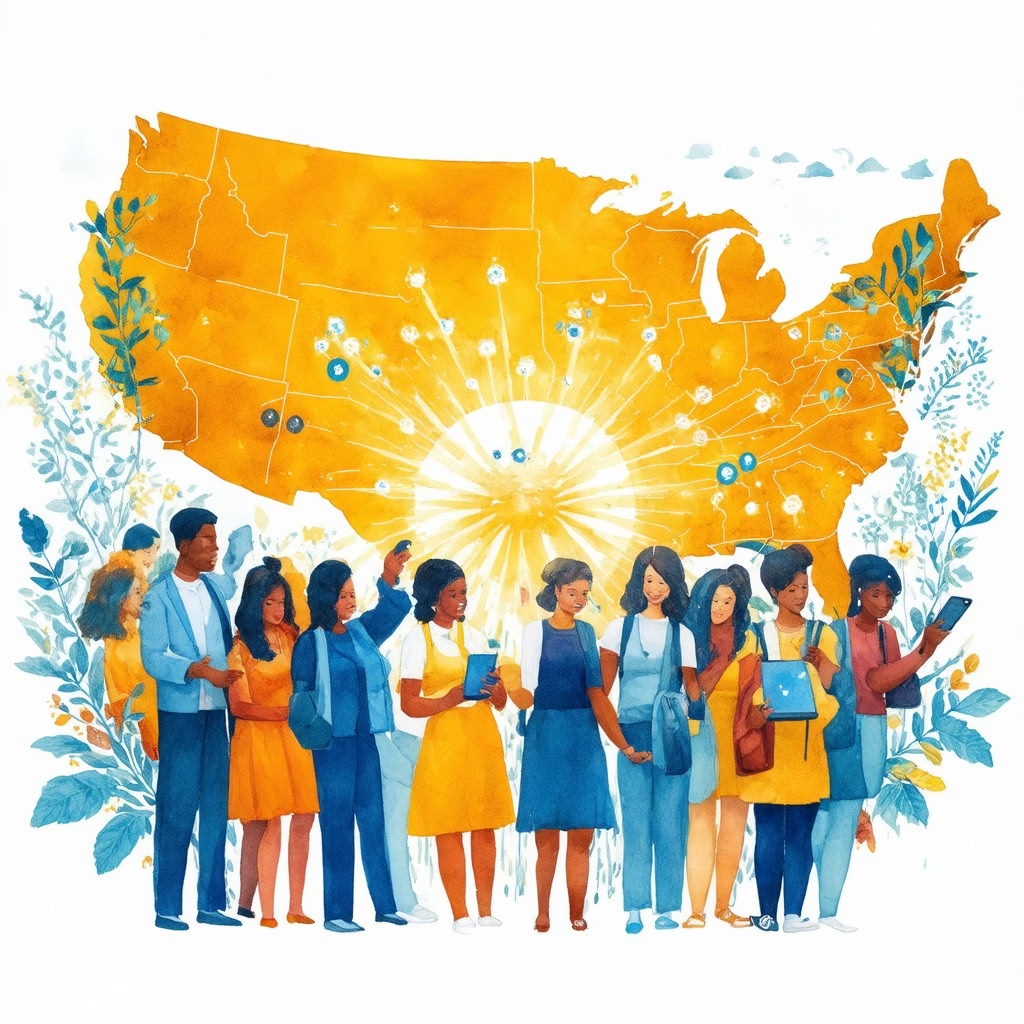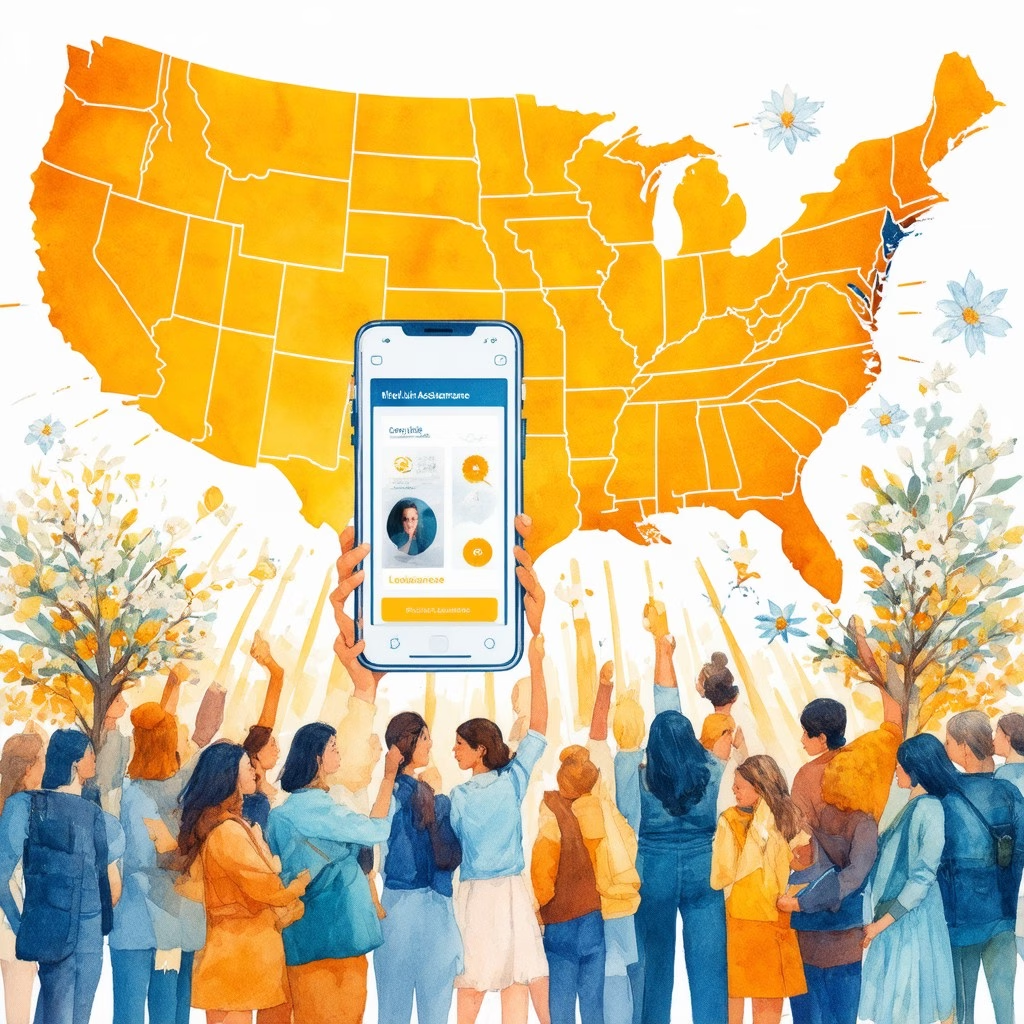Key Takeaways
- Eligible participants of the Lifeline Assistance Program can receive monthly discounts of up to $9.25 for internet and $5.25 for voice services, significantly lowering communication costs.
- To qualify for the Lifeline program, applicants must demonstrate financial hardship through participation in government assistance programs like SNAP or Medicaid.
- The program offers access to Lifeline free phone options, ensuring low-income households maintain vital communication links.
- State-specific programs, such as the Louisiana Lifeline program and New York State Lifeline program, provide tailored benefits and services to enhance accessibility.
- Understanding the differences between the Lifeline program and the Affordable Connectivity Program (ACP) helps consumers choose the best assistance option for their needs.
In today’s digital age, access to reliable communication is essential, and the lifeline assistance program plays a crucial role in bridging the gap for low-income individuals and families. This comprehensive guide will explore the myriad benefits of the lifeline program, including payment structures, eligibility requirements, and options for obtaining a lifeline free phone. We will delve into state-specific programs, such as the Louisiana Lifeline program and the New York State Lifeline program, highlighting unique advantages and services available in each region. Additionally, we will clarify the differences between the lifeline program and the Affordable Connectivity Program (ACP), ensuring you have a clear understanding of your options. Whether you’re curious about the monthly costs associated with lifeline phone service or need guidance on how to apply for lifeline assistance, this article is designed to equip you with the essential insights needed to maximize your benefits from the lifeline assistance program. Join us as we navigate the various facets of this vital service, empowering you to take full advantage of the resources available to you.
How much does the Lifeline program pay?
Overview of the Lifeline Assistance Program
The Lifeline Assistance Program is designed to provide financial support to low-income individuals, helping them afford essential communication services. This program is crucial for ensuring that everyone has access to reliable phone and internet services, which are vital for education, employment, and emergency situations. By participating in the Lifeline program, eligible individuals can significantly reduce their monthly communication costs, making it easier to stay connected with family, friends, and essential services.
Understanding the payment structure of the Lifeline program
The Lifeline program provides financial assistance to low-income individuals to help them afford essential communication services. Here’s a detailed breakdown of the benefits:
- Monthly Benefits: Eligible participants can receive a monthly discount of up to $9.25 for qualifying internet or bundled services. For voice-only services, the benefit is $5.25 per month.
- Eligibility Criteria: To qualify for the Lifeline program, applicants must demonstrate financial hardship, typically by participating in government assistance programs such as SNAP, Medicaid, or SSI. After an initial six-month period, participants can apply for the standard Lifeline benefit.
- Application Process: Individuals must submit a line separation request if they are currently receiving Lifeline benefits through another household member. It is crucial to provide accurate documentation to verify eligibility and ensure continued support.
- Additional Resources: For more information on the Lifeline program, including how to apply and check eligibility, visit the FCC Lifeline Program website or consult local service providers.
- Impact of Lifeline: The Lifeline program aims to bridge the digital divide, ensuring that low-income households have access to necessary communication services, which is vital for education, employment, and emergency situations.
For further details, refer to the FCC’s official guidelines on the Lifeline program, which provide comprehensive information on benefits and eligibility requirements.

What is the Louisiana Lifeline program?
The Louisiana Lifeline program is a federal initiative designed to provide discounted phone and internet services to eligible low-income households. This program aims to ensure that all residents have access to essential communication services, which are vital for staying connected with family, friends, and essential services. Understanding the specifics of the Louisiana Lifeline program can help you determine if you qualify and how to apply.
Exploring state-specific Lifeline programs: Louisiana
In Louisiana, the Lifeline Assistance program offers significant benefits to low-income families. Here are the key components of the program:
- Eligibility Criteria:
- Income Limit: Households must have an income at or below 135% of the Federal Poverty Guidelines. For 2023, this translates to an annual income of approximately $36,000 for a family of four.
- Public Assistance Programs: Participation in programs such as SNAP (Supplemental Nutrition Assistance Program), Medicaid, SSI (Supplemental Security Income), or Section 8 housing assistance qualifies applicants for the Lifeline program.
- Additional Qualifiers: Enrollment in the Federal Pell Grant program or being a survivor of domestic violence or human trafficking may also qualify individuals for assistance.
- Application Process:
- Check Eligibility: Prospective applicants can verify their eligibility by visiting the Lifeline Support Center, which provides resources and guidance.
- Online Application: Applications are submitted through the National Verifier, a centralized system that confirms identity and address.
- Provider Selection: After approval, participants can choose from various participating phone or internet service providers.
- Documentation Requirements:
- Applicants may need to provide proof of income or documentation showing participation in public assistance programs to complete their application.
- Program Limitations:
- One Account Per Household: Only one Lifeline account is permitted per household to prevent abuse of the program.
- Annual Verification: Participants must undergo annual re-verification to maintain their eligibility for continued benefits.
- Participating Providers: In Louisiana, several providers offer Lifeline services, including TruConnect, Cliq Mobile, Assurance Wireless, Life Wireless, and Vexus Fiber, ensuring that eligible households have access to affordable communication services.
For more detailed information, applicants can refer to the FCC Lifeline Program or the USAC Lifeline Program.
Benefits of the Lifeline Assistance program in Louisiana
The Lifeline Assistance program in Louisiana offers numerous benefits that can significantly enhance the quality of life for eligible participants. Here are some of the key advantages:
- Reduced Monthly Costs: Participants receive substantial discounts on their monthly phone and internet bills, making essential services more affordable.
- Access to Lifeline Free Phone Services: Eligible households can receive a Lifeline free phone, ensuring they have a reliable means of communication.
- Improved Connectivity: With access to affordable phone and internet services, families can stay connected, access educational resources, and seek employment opportunities.
- Support for Vulnerable Populations: The program specifically aids low-income households, including those facing hardships such as domestic violence or homelessness, by providing essential communication tools.
By understanding the benefits of the Lifeline Assistance program, you can make informed decisions about applying for assistance and improving your household’s connectivity.
What is the difference between the ACP and the Lifeline program?
The Lifeline Assistance Program and the Affordable Connectivity Program (ACP) are both initiatives aimed at making communication services more accessible to low-income households, but they serve different purposes and have distinct eligibility requirements.
Comparing the Lifeline program and the ACP program
The Lifeline program, established by the Federal Communications Commission (FCC), provides a monthly discount on phone and internet services to eligible low-income consumers. This program aims to ensure that all Americans can maintain essential communication services, particularly in emergencies. Eligible participants can receive a discount of up to $9.25 per month on their phone or internet service, with higher discounts available for those living on Tribal lands.
On the other hand, the Affordable Connectivity Program (ACP) is a newer initiative created under the Infrastructure Investment and Jobs Act, designed to expand broadband access to low-income households. This program offers a monthly discount of up to $30 for eligible households and up to $75 for those on Tribal lands, making internet services more affordable. Additionally, the ACP provides a one-time discount for purchasing a laptop, desktop computer, or tablet, which is not available under the Lifeline program.
In summary, while both programs aim to enhance access to communication services for low-income individuals, the Lifeline program focuses on providing discounts for existing phone and internet services, whereas the ACP offers broader support for broadband access and device purchases. For more detailed information, you can visit the FCC Lifeline Program or resources like Gov Guider, which provide guidance on eligibility and application processes for these programs.
Key features of the Lifeline Assistance program vs. ACP
When comparing the Lifeline Assistance program to the ACP, several key features stand out:
- Discount Structure: The Lifeline program offers a fixed monthly discount on phone and internet services, while the ACP provides a higher discount specifically for broadband access.
- Device Support: The ACP includes a one-time discount for purchasing devices, which is not part of the Lifeline program.
- Eligibility Criteria: Both programs have different eligibility requirements, with the ACP focusing more on broadband access and Lifeline on basic communication services.
- Target Audience: The Lifeline program primarily targets low-income individuals needing essential phone services, whereas the ACP aims to bridge the digital divide by enhancing internet access for low-income households.
Understanding these differences can help you determine which program best suits your needs. If you’re interested in applying for assistance, you can learn more about how to apply for Lifeline or explore federal Lifeline program details.
What is the New York State Lifeline program?
The New York State Lifeline program is a vital assistance initiative designed to provide discounted telephone services to eligible low-income residents. This program aims to ensure that all New Yorkers have access to essential communication services, which are crucial for personal safety, employment opportunities, and access to vital information.
Overview of the Lifeline program in New York
The New York State Lifeline program offers significant benefits to low-income households by reducing the cost of telephone services. Eligible participants can receive discounts on their monthly phone bills, making it easier for them to stay connected. The program is part of a broader effort to enhance communication access for all residents, particularly those facing financial hardships.
Unique benefits of the New York State Lifeline program
- Eligibility: To qualify for the Lifeline program, applicants must meet specific income criteria or participate in certain government assistance programs, such as Medicaid, Supplemental Nutrition Assistance Program (SNAP), or Supplemental Security Income (SSI).
- Discounted Services: Participants can receive significant discounts on their monthly telephone bills. Discounts may vary depending on the provider and the type of service (landline or wireless).
- Participating Providers: Many telephone service providers in New York, including major wireless and cable companies, participate in the Lifeline program, offering various plans tailored to meet the needs of low-income consumers.
- Application Process: Interested individuals can apply for the Lifeline program through their chosen service provider or by visiting the New York State Public Service Commission’s website for more information and guidance on the application process.
- Importance of Communication: Access to affordable telephone services is essential for maintaining connections with family, friends, and essential services, particularly for vulnerable populations.
For further details and to apply, individuals can visit the New York State Public Service Commission’s official website, which provides comprehensive information about the Lifeline program and its benefits.

What is the monthly cost for Lifeline?
The monthly cost for the Lifeline Assistance Program varies depending on the services and devices selected. Understanding these costs is crucial for individuals seeking affordable communication options. The Lifeline program aims to provide low-income households with access to essential phone services, including both landline and mobile options.
Understanding the monthly costs associated with Lifeline services
The Lifeline Assistance Program typically offers a discount on monthly phone service, which can significantly reduce the financial burden for eligible participants. The exact amount of the discount can vary by state and service provider, but it generally covers a portion of the monthly service fee. For instance, many providers offer plans that can be as low as $9.25 per month for basic phone service. This makes it easier for low-income families to stay connected without incurring high costs.
In addition to the monthly service fee, some providers may charge activation fees or require a minimum commitment period. It’s essential to review the terms and conditions of each provider to understand any additional costs associated with the Lifeline program. For more detailed information on pricing and features, you can visit the FCC Lifeline Program for comprehensive guidelines.
Exploring Lifeline free phone options and their costs
One of the most appealing aspects of the Lifeline Assistance Program is the availability of free government cell phones. Eligible participants can receive a lifeline free phone, which includes basic features necessary for everyday communication. These free phones often come with a limited number of minutes and texts each month, but they provide a vital service for those who might otherwise be unable to afford a phone.
Providers like USAC offer various plans that include free phones as part of their Lifeline services. To qualify for a free government cell phone, applicants must meet specific income requirements or participate in certain government assistance programs. Understanding how to apply for Lifeline assistance is crucial for those looking to take advantage of these offerings. For more information on how to get a free government cell phone, check out the government assistance phone options.
What is proof of income for Lifeline?
To qualify for the Lifeline Assistance program, proof of income is essential. Acceptable documentation includes:
- Prior Year’s Tax Return: A copy of your state, federal, or Tribal tax return from the previous year serves as comprehensive proof of income.
- Current Income Statement: An annual income statement from your employer detailing your earnings can be submitted. This should include your gross income and any deductions.
- Social Security Benefits Statement: A statement from the Social Security Administration that outlines your benefits can be used as proof of income.
- Unemployment or Worker’s Compensation Statement: Documentation showing your unemployment benefits or worker’s compensation can also serve as valid proof of income.
For more detailed information on eligibility and documentation requirements, you can refer to the official FCC Lifeline Program resources or visit the USAC Lifeline Program.
How to apply for Lifeline assistance: Income proof guidelines
Applying for the lifeline program requires careful attention to the income proof guidelines. Here’s a step-by-step approach to ensure your application is complete:
- Gather Required Documents: Collect all necessary documentation that proves your income, as listed above.
- Complete the Lifeline Application Form: You can access the Lifeline application form online. Make sure to fill it out accurately.
- Submit Your Application: Once your application is complete, submit it along with the proof of income documentation to the designated Lifeline provider.
- Follow Up: After submission, keep track of your application status. You can contact lifeline customer service for any inquiries regarding your application.
For more information on how to get a free government cell phone through the lifeline assistance program free phone, visit government assistance phone options.
Lifeline Assistance program free phone options
How to get a free government cell phone through Lifeline
The Lifeline Assistance program provides eligible individuals with access to free government cell phones, ensuring that low-income households can stay connected. To get a free government cell phone through Lifeline, follow these steps:
1. **Check Eligibility**: You must meet specific income requirements or participate in a qualifying government assistance program, such as Medicaid or SNAP. Visit the [FCC Lifeline Program](https://www.fcc.gov/lifeline) for detailed eligibility criteria.
2. **Choose a Provider**: Various providers offer Lifeline services, including major carriers like Assurance Wireless and Safelink Wireless. Research available options in your area to find the best fit for your needs.
3. **Complete the Lifeline Application**: Fill out the Lifeline application form online or through your chosen provider. Ensure you provide accurate information regarding your income and household size.
4. **Submit Documentation**: You may need to submit proof of income or participation in a qualifying program. This documentation can often be uploaded directly through the provider’s website.
5. **Receive Your Phone**: Once your application is approved, your provider will send you a free government cell phone, typically within a few weeks.
By following these steps, you can successfully navigate the process of obtaining a Lifeline free phone, ensuring you have access to essential communication services.
Lifeline application form online: Step-by-step guide
Applying for the Lifeline Assistance program online is a straightforward process. Here’s a step-by-step guide to help you through the Lifeline application form:
1. **Visit the National Verifier**: Start by going to the [National Verifier](https://www.nationalverifier.com/), which is the official platform for Lifeline applications.
2. **Create an Account**: If you are a new user, you will need to create an account. Provide your email address and create a password.
3. **Fill Out the Application**: Complete the online application form with your personal information, including your name, address, and date of birth. Be sure to include details about your household income or the government assistance programs you participate in.
4. **Upload Required Documents**: You may be asked to upload documents that verify your eligibility, such as pay stubs or benefit letters. Ensure these documents are clear and legible.
5. **Submit Your Application**: After reviewing your information for accuracy, submit your application. You will receive a confirmation of your submission.
6. **Check Application Status**: You can check the status of your application through the National Verifier portal. If approved, you will be contacted by your chosen provider to finalize your Lifeline service.
By following this guide, you can efficiently complete the Lifeline application form online and take the first step toward receiving your Lifeline assistance program free phone.




